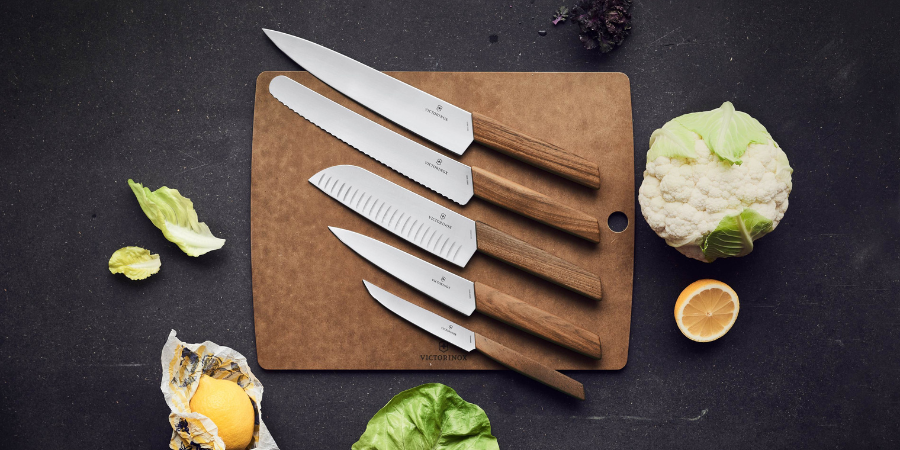The Ultimate Guide to Choosing Your Perfect Kitchen Knife
Selecting the perfect kitchen knife is an art in itself, as it can significantly impact your cooking experience. The right knife makes tasks smoother, safer, and more efficient. With countless options available, making an informed choice can be a daunting task. In this helpful guide, we will look at different things to think about when picking a kitchen knife. We will also assist you in finding the best knife to improve your cooking abilities.
Why Does the Right Kitchen Knife Matter?
A high-quality kitchen knife is a crucial tool for any home chef, professional or amateur. The right knife can simplify food preparation, making it safer and more enjoyable. By investing in a good kitchen knife, you ensure your culinary adventures are as efficient and satisfying as possible.
Key Considerations in Choosing a Kitchen Knife:
1. Types of Kitchen Knives:
When you decide which kitchen knife to buy, consider the types of food you often cook and select knives that suit your way of cooking.
Before delving into the specifics of knife materials and designs, it's essential to understand the various types of kitchen knives. Different knives are designed for different tasks, and having the right tools for the job can make a world of difference.
Chef's Knife: A versatile, all-purpose knife with a broad, tapered blade. Ideal for slicing, dicing, chopping, and mincing.
Carving Knife: A precision tool with a long, narrow blade designed for precisely slicing roasts, poultry, and other cooked meats.
Paring Knife: A small knife with a pointed tip, perfect for detailed tasks like peeling and trimming.
Bread Knife: Known for its serrated edge, making it perfect for slicing through bread and delicate pastries without crushing them.
Boning Knife: Designed for separating meat from bone, making it a favorite among butchers and meat enthusiasts.
Santoku Knife: A Japanese multipurpose knife with a shorter, wider blade that excels at slicing, dicing, and chopping.
2. Blade Material:
The material of the knife's blade is a vital consideration. It affects the knife's sharpness, durability, and ease of maintenance.
Stainless Steel: This is a popular choice due to its resistance to rust and stains. Stainless steel knives are relatively easy to maintain and come in various grades with differing levels of sharpness.
High-carbon stainless steel: High-carbon stainless steel is a material that combines the qualities of both stainless steel and high-carbon steel. These blades are very sharp and stay sharp for a long time. They also do not easily rust.
Carbon Steel: Known for its sharpness and ease of sharpening, but it's more susceptible to rust and staining.
Ceramic: Extremely sharp and lightweight but can be brittle and prone to chipping.
3. Knife Handles:
The knife handle is as important as the blade itself. It affects the comfort, control, and safety of the knife.
Wood: Wood handles are favoured for their aesthetics and comfortable grip. But, they might need more care to avoid cracking and drying.
Plastic: Lightweight and easy to maintain but might not offer the same level of grip as wood or metal handles.
Stainless Steel: Durable and low maintenance, but it can become slippery when wet.
Ergonomic Design: Some knife handles are ergonomically designed to provide comfort during prolonged use. These handles often combine different materials for the best of both worlds.
4. Blade Length:
The length of a knife's blade directly affects its versatility.
Short Blades (6-8 inches): These are ideal for precise tasks like peeling, trimming, and intricate cutting.
Medium Blades (8-10 inches): These are versatile and suit a wide range of kitchen tasks, including slicing and chopping.
Long Blades (10+ inches): Best for heavy-duty cutting and slicing tasks. They may feel unwieldy for those unfamiliar with them.
When choosing blade length, consider your cooking style and the kitchen tasks you perform most frequently.
5. Knife Maintenance:
Proper maintenance is essential to preserve the quality and lifespan of your kitchen knife. This includes cleaning, sharpening, and honing. Some knives are dishwasher-safe, while others require handwashing to avoid damage. Regularly honing the blade helps maintain its sharpness, and sharpening it as needed ensures it stays effective.
Making the Final Decision:
Choosing the perfect kitchen knife ultimately comes down to your personal preferences, cooking needs, and budget. There is no one-size-fits-all solution. It's crucial to consider what you cook most frequently and select knives that align with those tasks. Whether you opt for a Victorinox knife or another trusted brand, your choice will significantly impact your culinary journey.
In conclusion, finding the perfect kitchen knife is a personal journey. With this comprehensive guide, you're well-equipped to embark on this adventure. Your overall kitchen experience will undoubtedly benefit from your well-informed decision. Remember that the right knife is your trusty companion in the kitchen. So choose wisely, keep it sharp, and let it be an extension of your culinary creativity.
Now that you've learned the ropes of selecting your ideal knife, feel free to explore our extensive collection of Victorinox Swiss-made knives by clicking the button below.
And, for your convenience, you can download a PDF version of this guide to keep on your phone. This way, you can review it as you shop for your perfect kitchen knife.





